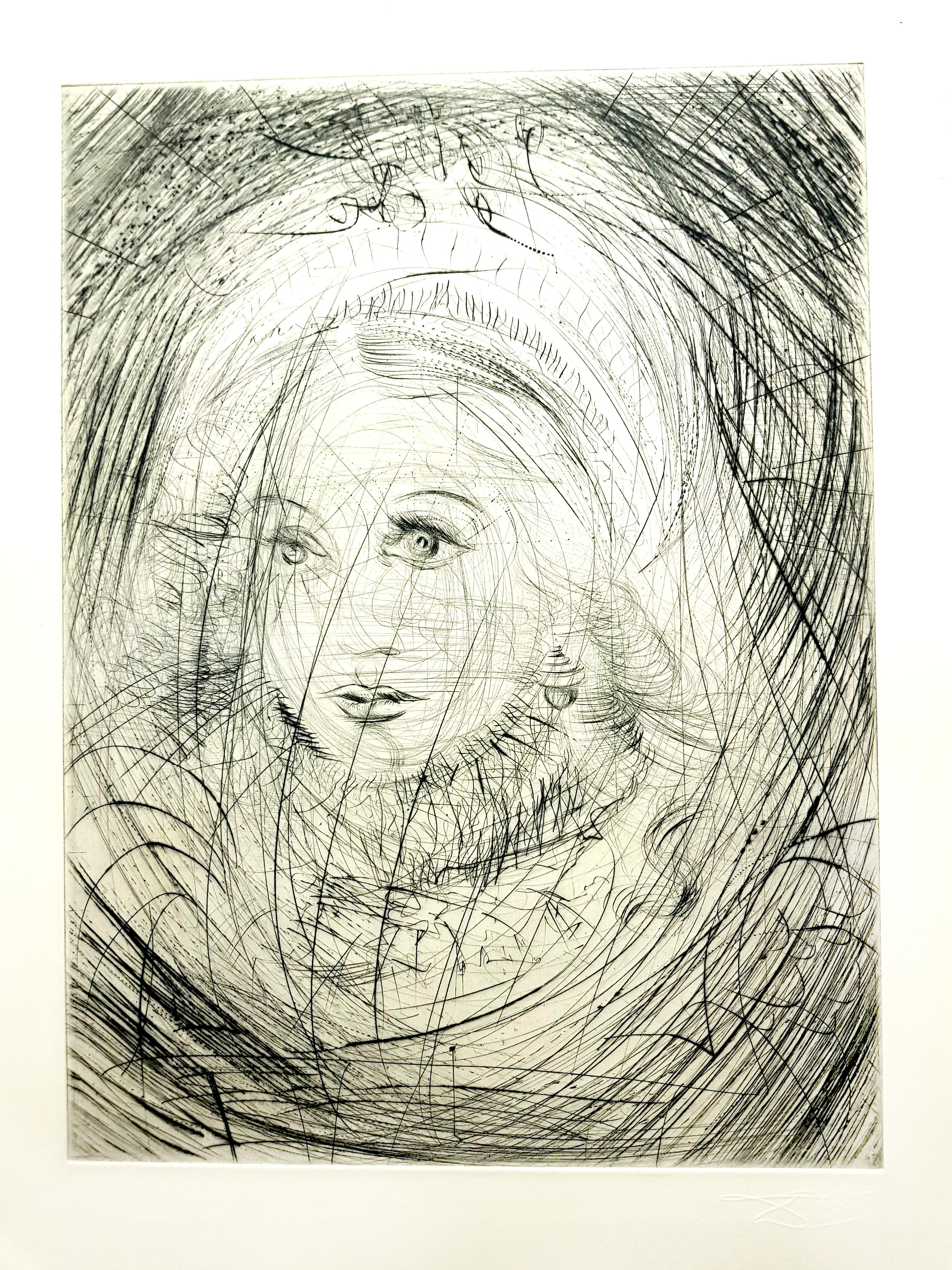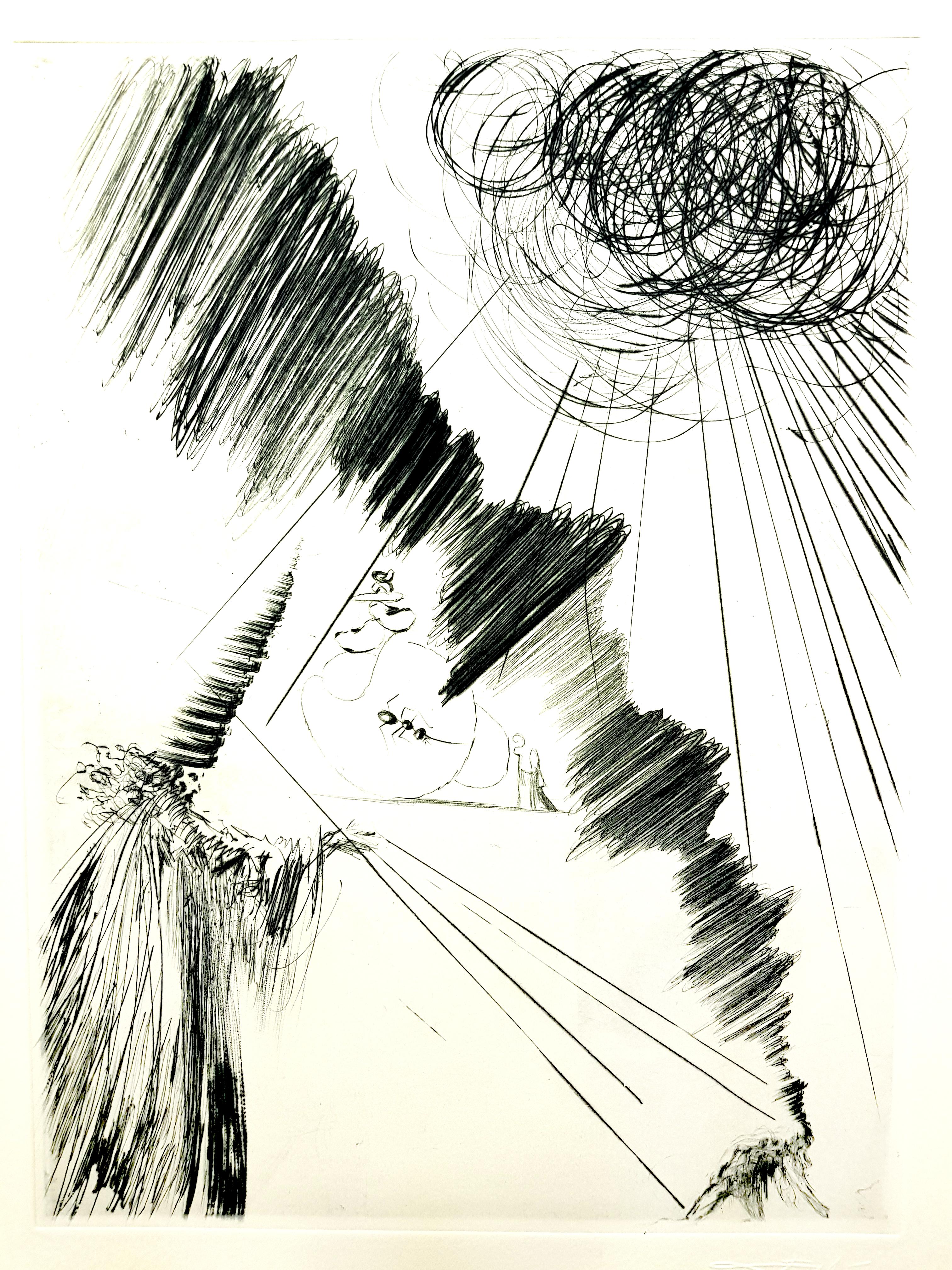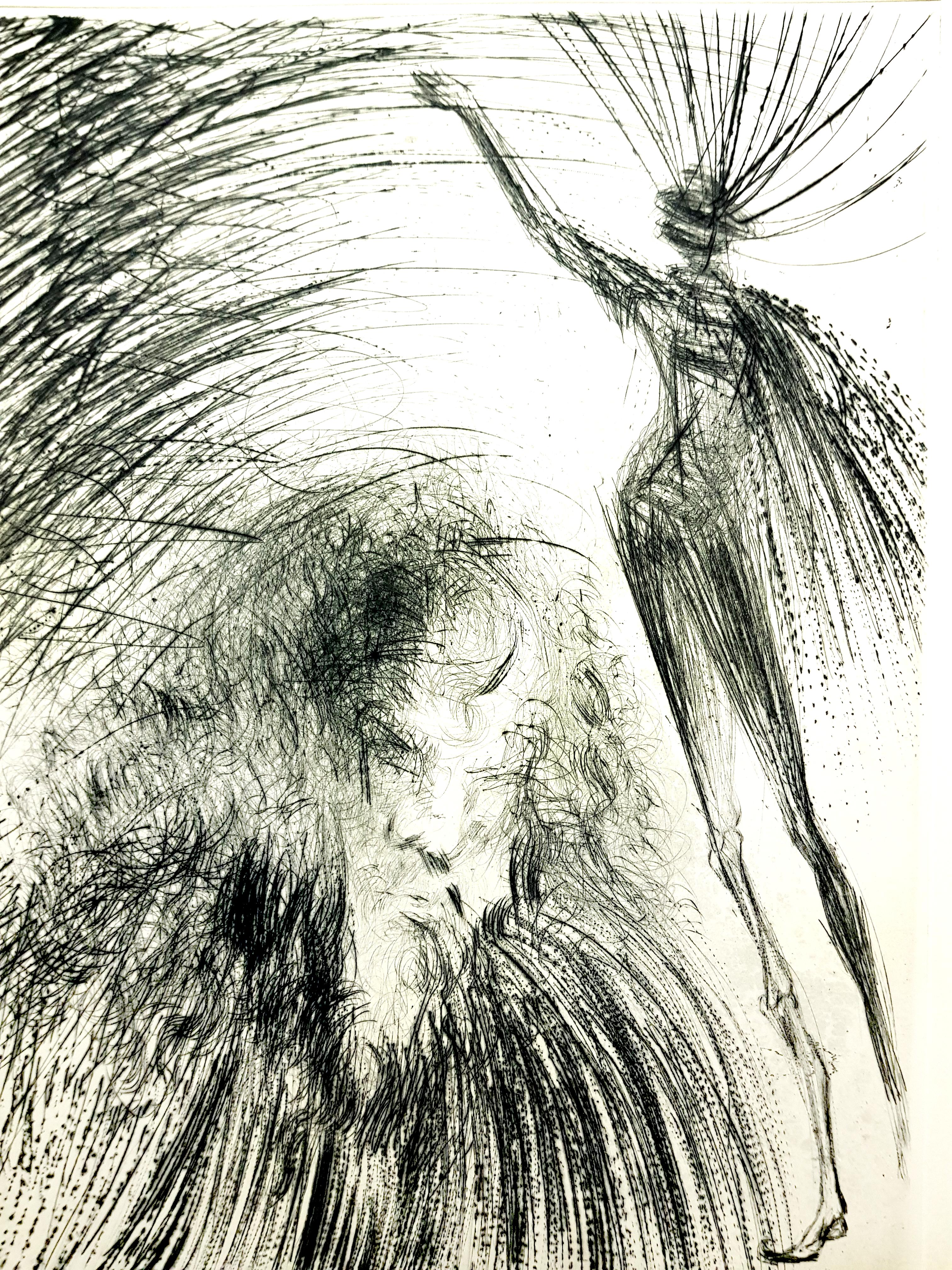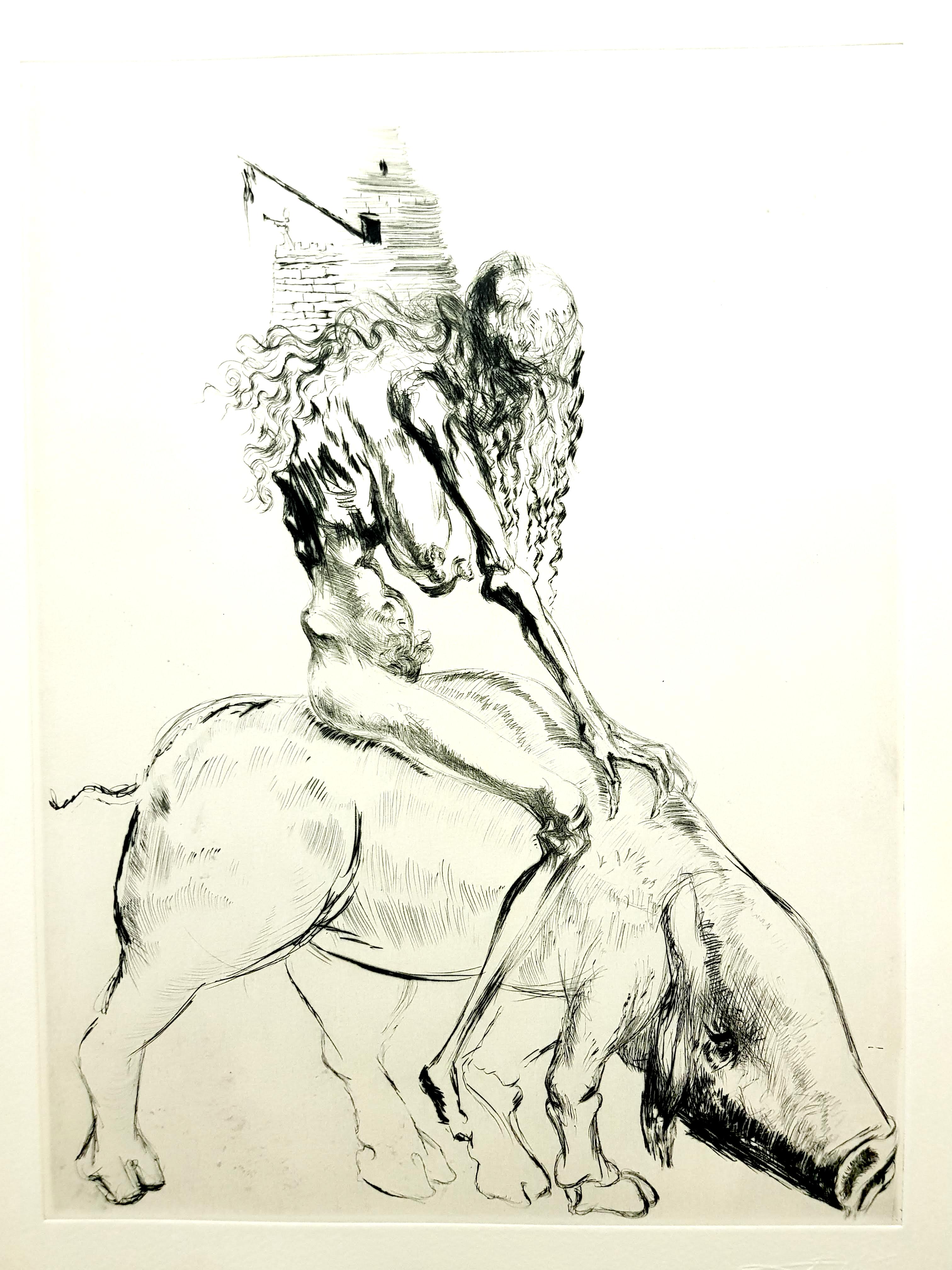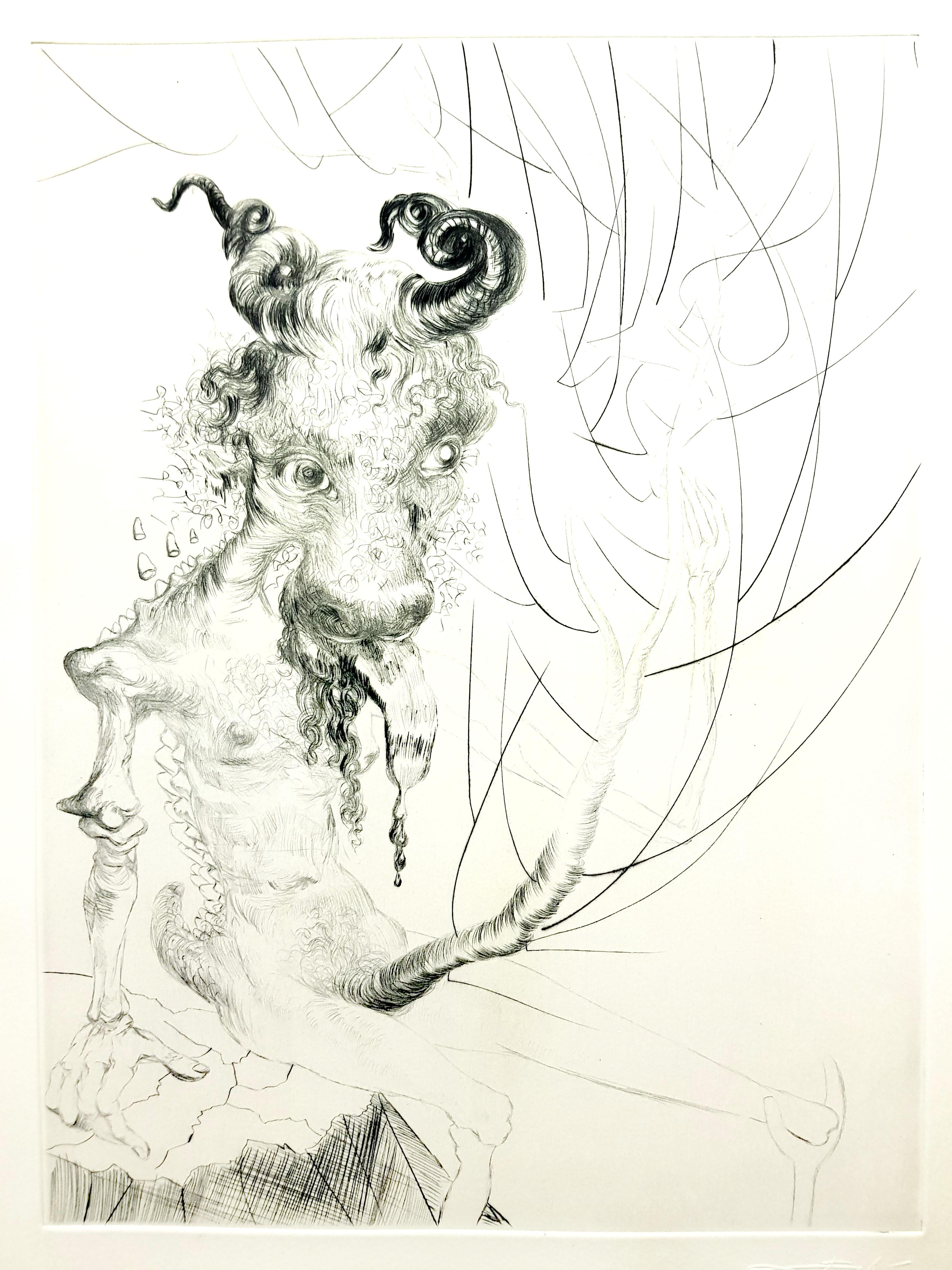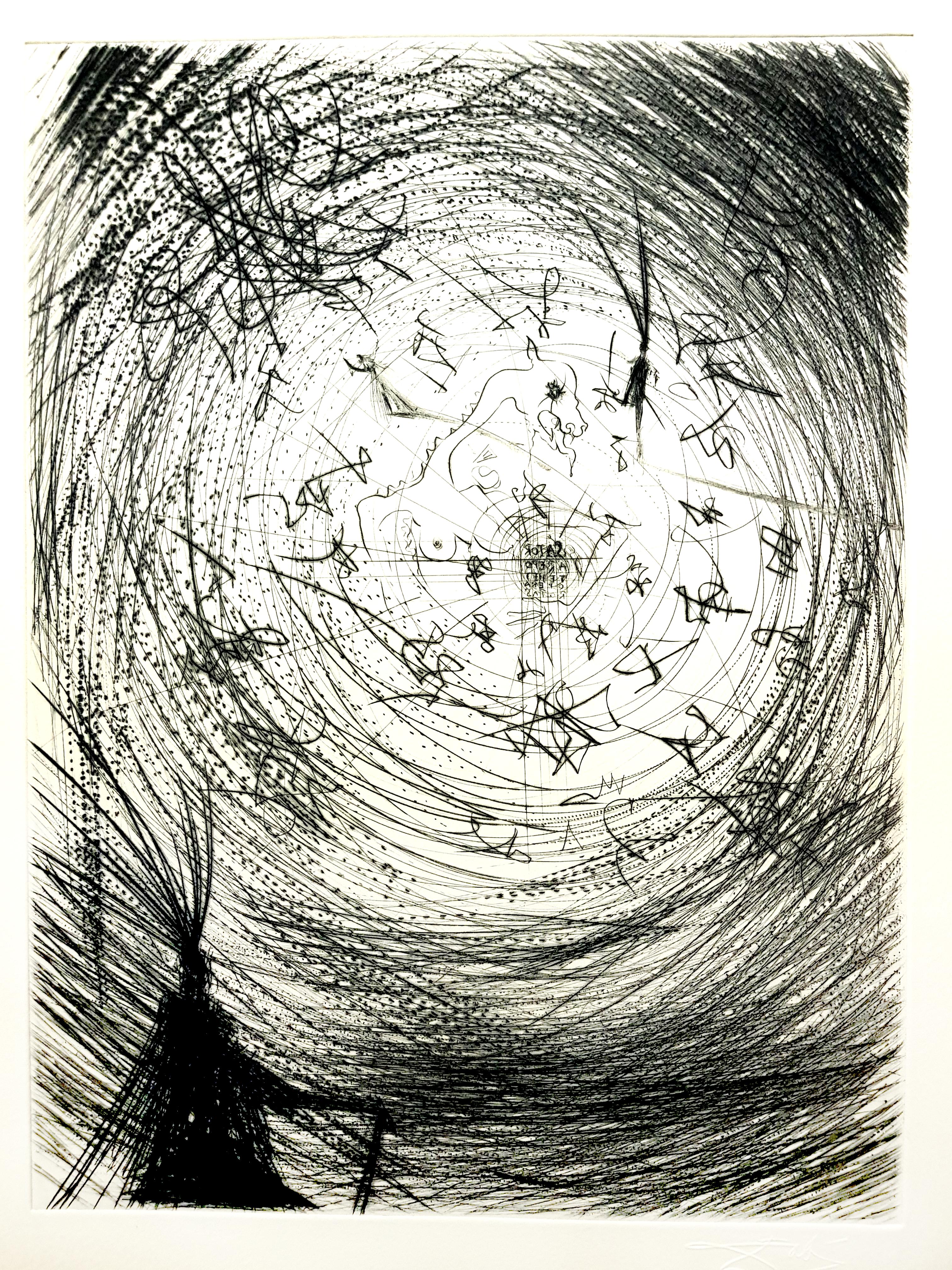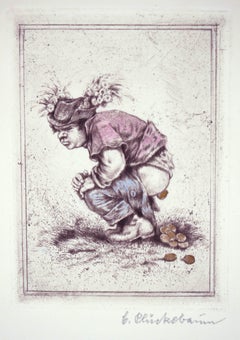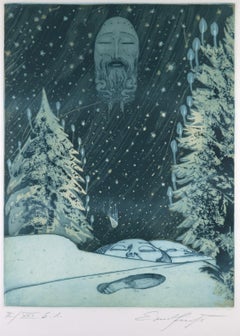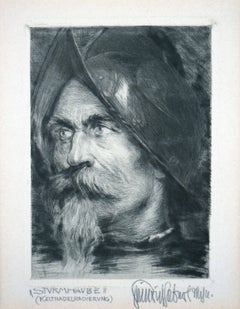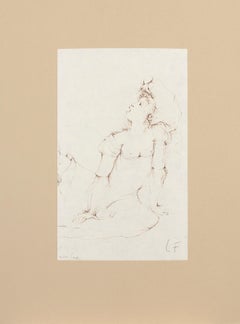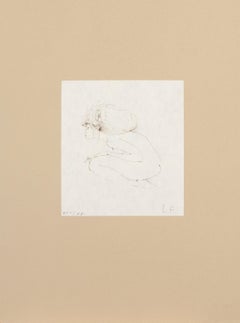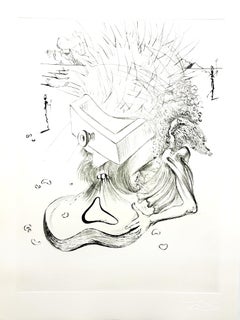
Flora Okuli / - Allegorical Eyes -
View Similar Items
Want more images or videos?
Request additional images or videos from the seller
1 of 10
Ernst FuchsFlora Okuli / - Allegorical Eyes -1975
1975
About the Item
- Creator:Ernst Fuchs (1930, Austrian)
- Creation Year:1975
- Dimensions:Height: 16.15 in (41 cm)Width: 11.62 in (29.5 cm)Depth: 0.4 in (1 cm)
- Medium:
- Movement & Style:
- Period:
- Condition:
- Gallery Location:Berlin, DE
- Reference Number:1stDibs: LU2438212773052

About the Seller
5.0
Vetted Seller
These experienced sellers undergo a comprehensive evaluation by our team of in-house experts.
Established in 2014
1stDibs seller since 2023
7 sales on 1stDibs
Typical response time: 7 hours
More From This SellerView All
- The Talisman (so called Dukatenscheisser) - The philosopher's stone -By Carl PlückebaumLocated in Berlin, DECarl Maria Plückebaum (1880 Düsseldorf - 1952 ibid.), Der Talismann (sog. Dukatenscheisser), partly colored etching, 11.5 x 8.5 cm (plate size), 26.5 x 20 cm (sheet size), signed by hand below the image on the right "C. Plückebaum" and inscribed by hand at lower left "Der Talismann". - left and right side of the sheet with browned stripes, otherwise good copy - The philosopher's stone - About the artist Here, Carl Plückebaum gives free rein to his anti-academic impulses and turns the subtle humor of his pictures into crudeness. Following Adrian Ostade's peasants as they go about their needy business, we see a cowardly fellow in a squatting position. His excrement, however, is not the organic remains of digestion, but - like the golden donkey in the Grimm fairy tale - ducats. However, they appear more brown than golden, which is emphasized by the discreet hand-coloring of the picture. The unattractive accumulation is countered by the blossoms decorating the crouching man's hat. Totally absorbed in his action, his activity is evident in the strained expression on his face, giving Plückebaum a whole new verisimilitude to the concept of naturalism. The title "The Talisman" then turns naturalism back to the miraculous, formulating in a humorous way that these legacies are also a "miracle of nature". About the artist Coming from a poor background, Carl Plückebaum, who had a walking disability and was of short stature, initially worked as a church restorer. He also took private drawing lessons. In 1901 he won the first prize of the Düsseldorf Museum of Decorative Arts, which enabled him to finance his studies at the Düsseldorf Academy. There he was a pupil of Eduard von Gebhardt and Peter Janssen the Elder, but began to doubt the academic teaching. In 1906 he took part in a group exhibition at the Städtische Kunsthalle Düsseldorf, which violated the academy's statutes and led to his dismissal. However, the extraordinary success with the public confirmed him as an artist and provided him with the financial means for a study trip to Italy. Enchanted by Florence, he retired to the Franciscan monastery of Fisole, where he worked as a fresco painter. Back in Düsseldorf, he turned increasingly to children's and animal drawings, and in 1907 he was a founding member of the Niederrhein Secessionist Artists' Group. In 1910 he travelled to Italy again, accompanied by his painter friends Walter Ophey and Carl Schmitz-Pleis, visiting Rome and Naples in particular. He then stayed in Munich to study the Old Masters at the Pinakothek. It was in the artistic circles of Schwabing that he met his future wife, the painter Meta Weber. In Düsseldorf, Carl and Meta Plückebaum...Category
Early 20th Century Realist Figurative Prints
MaterialsEtching
$246 Sale Price20% Off - The Lost TraceBy Ernst FuchsLocated in Berlin, DEErnst Fuchs (1930 Vienna - 2015 ibid), The Lost Trace, 1972. Vernis mou and aquatint etching, 46.8 x 36.4 cm (plate), 66 x 50 cm (sheet), 69.5 x 53.5 cm (frame), WVZ Hartmann no. 185...Category
1970s Surrealist Figurative Prints
MaterialsEtching
$861 Sale Price17% Off - Balaclava - The target in sight -Located in Berlin, DEHeinrich Haberl (1869 Passau to 1934 Munich), Sturmhaube, c. 1900. drypoint, 14 x 10 cm (platemark), 28 x 21 cm (sheet size), 39 x 29 cm (passe-partout), titled "Sturmhaube" in lead at lower left and inscribed "Kaltnadelradierung", signed and locally inscribed "Heinrich Haberl Mchn. [Munich]" at lower right, inscribed again in lead on verso and with old collection stamp. - slightly darkened, fixed and mounted - The target in sight - About the artwork The theatrical "role-portrait" is to be seen against the background of the Rembrandt cult, which reached its climax at the end of the 19th century. The soldier seems to have stepped straight out of Rembrandt's Night Watch (1642) to fix something outside the picture with an alert and ready gaze. The steeply rising brim of the morion frames the gaze and thus perspectivises it as the actual 'pictorial action'. The gaze represents both the vigilant defence and the visionary goal of the battle. Not only the subject, but also the style of the etching needle reflect Rembrandt's understanding of the times. Strong contrasts of light and dark are created in a virtuoso free stroke, without losing the effect of the reflections on the helmet and in the eyes. This shows a kinship with the early prints of Lovis Corinth, who also saw himself as an artist in the role of the knight. Against this background, Haberl's picture can also be seen as a representation of his artistic self-image. About the artist Heinrich Haberl first attended the art school in Nuremberg and from 1892 studied at the Munich Academy. There he was a master student of Johann Leonhard von Raab, Rudolf von Seitz, Franz von Defregger...Category
Early 19th Century Realist Figurative Prints
MaterialsEtching
$210 Sale Price20% Off - Agony - The architecture of decay -Located in Berlin, DEJörg Olberg (*1956 Dresden), Agony, 1987. etching, E.A. (edition of 30), 24 x 17 cm (image), 46 x 37 cm (sheet), each signed in pencil lower right "Olberg" and dated "IX [19]87", inscribed lower left "E.A. [Epreuve d'Artiste]". - minimal crease and dust stains in the broad margin - The architecture of decay - About the artwork Jörg Olberg draws here the sum of his artistic study of the Berlin ruins, which were still present in the cityscape well into the 80s. With his work "Agony" he creates an allegory of decay. Positioned in the landscape of ruins, a ruined house grows before the viewer, rising like the Tower of Babel into the sky, its roof and gable brightly illuminated by the sun. But already the roof shows mostly only the rafters, and as the gaze is drawn further down, the building visibly disintegrates, the beams protruding in all directions looking like splintered bones. Slowly but inexorably - in agony - the house will collapse in on itself and become nothing more than the burial mound of itself. At the same time, the small-scale stone composition and the plaster form a pattern-like ornamentation of decay. The tension in the picture is fed by the counter-movement of growth and collapse, which is heightened by the dramatic formation of clouds. The swirls of clouds are reminiscent of a world landscape...Category
1980s Realist Figurative Prints
MaterialsEtching, Paper
$246 Sale Price20% Off - Rudolf v. Rittner as Florian Geyer - Last man standing -By Lovis CorinthLocated in Berlin, DELovis Corinth (1858 Tapiau - 1925 Zandvoort), Rudolf von Rittner as Florian Geyer, 1924 (Müller 854), drypoint signed in pencil. 20.4 × 14.2 (plate size), 37.7 × 30.6 cm (sheet size). Published by Karl Nierendorf, Berlin. Framed in a passepartout. - Strong, precise impression. Frame a little bit rubbed and with two small damages. About the artwork The knight is a leitmotif in Lovis Corinth's work, culminating in his Self-Portrait in Armour of 1914. Of all the paintings on this theme, Corinth most often depicted Florian Geyer. Descended from a Franconian noble family, he fought for the freedom of the peasants during the peasant wars of the Reformation, first diplomatically and then militarily, leading the legendary Schwarzen Haufen (Black Troops). The name derives from the black uniforms with which Geyer dressed the peasants willing to fight. During the Napoleonic occupation, the freedom fighter Florian Geyer was sung about by the Romantics, and the free corps Die Schwarze Schaar, founded in 1813 by Major von Lützow, succeeded the Schwarzer Haufen. It was against this historical background that Gerhard Hauptmann wrote the revolutionary drama Florian Geyer, which premiered at the Deutsches Theater in Berlin in 1896. While the actor Rudolf Rittner, who would later appear in Fritz Lang's films, initially played the role of Schäferhans, he took over the leading role in the new production at Berlin's Lessing Theatre in 1904, again directed by Emil Lessing, which established his fame as an actor. Hauptmann himself praised the acting. He wrote to Hugo von Hofmannsthal: "It went quite well with Florian Geyer. In any case, I had the great pleasure of seeing the play again in an admirable performance". And Lovis Corinth was so taken with Rittner's performance that he painted an oil portrait of him in the role of Florian Geyer in 1906. After two further graphic versions in 1915 and 1920/21, Corinth returned to the painting a year before his death and almost twenty years after the oil painting to create this graphic version in 1924. Even the inscription in the picture was taken over. This proves all the more the importance of the knight and freedom fighter for Corinth's self-image. The oil painting, in particular, proclaims the single-minded determination to fight to the last for the values defended, manifested in the oil painting by the tattered flag held out to the enemy. There is a parallel with Rainer Maria Rilke's 1899 story The Cornet, in which the protagonist goes down with the flag that he first saved at the risk of his life. Consequently, the portrait is also a self-portrait, and the knight's armour is not an academic costume or an ironic refraction, but an expression of Corinth's self-image, which also includes his self-representation as an artist. The Secession poster...Category
1920s Expressionist Figurative Prints
MaterialsEtching
$834 Sale Price20% OffFree Shipping - View of a coastal town / - The Pilgrim's View -Located in Berlin, DEAlbert Ernst (1909 Fronhofen - 1996 Hamburg), View of a Coastal Town, etching, 30 x 37 cm (picture), 45 x 50.5 cm (frame), signed in pencil lower right "Albert Ernst", framed under g...Category
Mid-20th Century Realist Landscape Prints
MaterialsEtching
$219 Sale Price20% Off
You May Also Like
- CuriousBy Leonor FiniLocated in Columbia, MOLeonor Fini was born in Argentina in 1907 but travelled and lived in Europe with her mother from a young age. By 1931, she was in Paris, in the full swing of the Surrealist movement....Category
Mid-20th Century Surrealist Figurative Prints
MaterialsEtching
- CrouchBy Leonor FiniLocated in Columbia, MOLeonor Fini was born in Argentina in 1907 but travelled and lived in Europe with her mother from a young age. By 1931, she was in Paris, in the full swing of the Surrealist movement....Category
Mid-20th Century Surrealist Figurative Prints
MaterialsEtching
- Salvador Dali - The BeachBy Salvador DalíLocated in Collonge Bellerive, Geneve, CHSalvador Dali - The Beach - Original Etching Dimensions: 38 x 28 cm Edition: 235 1967 embossed signature On Arches Vellum References : Field 67-10 (p. 34-35)Category
1960s Surrealist Nude Prints
MaterialsEtching
- Salvador Dali - Marguerite - Original EtchingBy Salvador DalíLocated in Collonge Bellerive, Geneve, CHSalvador Dali - Marguerite - Original Etching from "Faust" suite Stamped signature, as issued From the standard edition of 731 Dimensions: 38,5 x 28,5 cm 1969 References : Field 69-1...Category
1960s Surrealist Nude Prints
MaterialsEtching
- Salvador Dali - Women - Original EtchingBy Salvador DalíLocated in Collonge Bellerive, Geneve, CHSalvador Dali - Women - Original Etching Embossed signature From the edition of 731 Dimensions: 38,5 x 28,5 cm 1969 References : Field 69-1 / Michler & Lopsinger 305Category
1960s Surrealist Nude Prints
MaterialsEtching
- Salvador Dali - Magician - Original EtchingBy Salvador DalíLocated in Collonge Bellerive, Geneve, CHSalvador Dali - Magician - Original Etching Stamp Signed Dimensions: 38,5 x 28,5 cm 1969 References : Field 69-1 K / Michler & Lopsinger 305 Salvador Dali Salvador Dali was born a...Category
1960s Surrealist Nude Prints
MaterialsEtching



